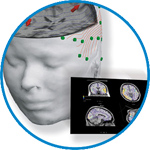- Home
- About ANT
-
Products

asa
asa is a highly flexible EEG/ERP and MEG analysis package with a variety of source reconstruction, signal analysis and MRI processing features.
.jpg)
eego mylab
The new frontier in multimodal brain research. With up to 16 kHz sampling rate, 256 EEG channels and unique software features, eego mylab gives you an unprecedented in-depth understanding of the human brain.

eego sports
eego sports offers complete freedom to collect high-density EEG data, bipolar EMG signals, and a variety of physiological sensor data, wherever and whenever required, with publish quality data in less than 15 minutes!

waveguard net
The waveguard net sets a new standard for research applications requiring high-density EEG data acquisition with quick preparation time, high flexibility, and subject comfort.

visor2
Our new and upgraded visor2 solutions integrate all the latest technologies for navigated rTMS, dual-coil navigation support, EEG-TMS recordings and pre-surgical evaluation for the highest quality in research and clinical procedures.

powerMAG ANT
The PowerMAG ANT 100 rTMS stimulator is designed for the specific needs of high-end TMS applications. Powerful high-frequency TMS as well as high precise single pulse and repetitive pulse protocols are combined in one single device.

xensor
xensor offers the solution for digitization of 3D electrode positions. xensor takes care of the whole procedure; it records, visualizes and stores positions acquired with a dedicated digitizer.

waveguard original
waveguard original is the cap solution for EEG measurements compatible with fMRI, MEG and TMS system. Use of active shielding guarantees performance in even the most demanding environments.

waveguard connect
waveguard connect EEG caps are a perfect match for hospitals and institutes aiming at reliable EEG, maximum uptime and great patient comfort! For optimal signal quality, the electrodes are made of pure, solid tin.

waveguard touch
waveguard touch is a dry electrode EEG cap. The unique Ag/AgCl coated soft polymer electrodes provide stable, research-grade EEG signals while maintaining subject comfort. The combination of these innovative dry electrodes and the industry-leading waveguard cap makes waveguard touch the best solution for dry EEG.

smartmove
smartmove allows planning of a complete TMS session ahead by defining stimulation sites based on anatomical MRI information and functional information like fMRI, PET or EEG/MEG.
Stay - References
- Support
- Events
- News
- Contact Us
You are here
Shifts in cortical representations predict human discrimination improvement
Shifts in cortical representations predict human discrimination improvement
We report experiments combining assessment of spatial tactile discrimination behavior and measurements of somatosensory-evoked potentials in human subjects before and after short-term plastic changes to demonstrate a causal link between the degree of altered performance and reorganization. Plastic changes were induced by a Hebbian coactivation protocol of simultaneous pairing of tactile stimuli. As a result of coactivation, spatial discrimination thresholds were lowered; however, the amount of discrimination improvement was variable across subjects. Analysis of somatosensory-evoked potentials revealed a significant, but also variable shift in the localization of the N20-dipole of the index finger that was coactivated. The Euclidean distance between the dipole pre- and post-coactivation was significantly larger on the coactivated side (mean 9.13 ± 3.4 mm) than on the control side (mean 4.90 ± 2.7 mm, P = 0.008). Changes of polar angles indicated a lateral and inferior shift on the postcentral gyrus of the left hemisphere representing the coactivated index finger. To explore how far the variability of improvement was reflected in the degree of reorganization, we correlated the perceptual changes with the N20-dipole shifts. We found that the changes in discrimination abilities could be predicted from the changes in dipole localization. Little gain in spatial discrimination was associated with small changes in dipole shifts. In contrast, subjects who showed a large cortical reorganization also had lowest thresholds. All changes were highly selective as no transfer to the index finger of the opposite, non-coactivated hand was found. Our results indicate that human spatial discrimination performance is subject to improvement on a short time scale by a Hebbian stimulation protocol without invoking training, attention, or reinforcement. Plastic processes related to the improvement were localized in primary somatosensory cortex and were scaled with the degree of the individual perceptual improvement.

 Read more
Read more.jpg)




